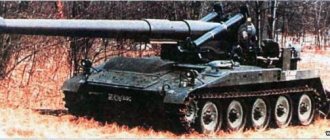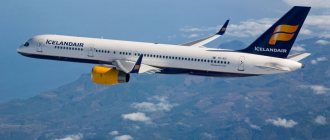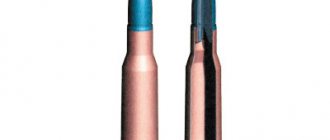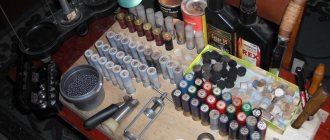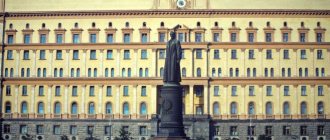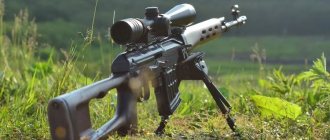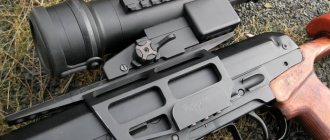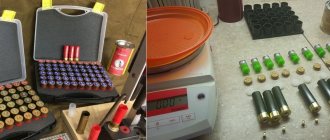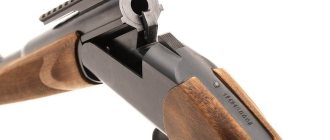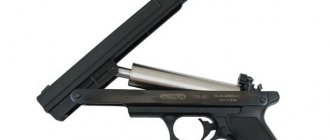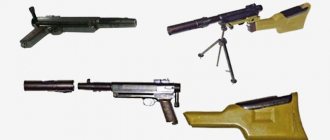The dynamically developing Soviet Union seriously declared itself in the 1960s by starting the production of fundamentally new jet aircraft. A new type of gas turbine engines has become of interest to aircraft designers for the production of passenger ships, increasing their flight characteristics and operational qualities.
The civil aviation fleet has begun to be updated with modern jetliners for mainline airlines and for local airspace routes. One of these fundamentally new projects was the Tu-154 passenger aircraft, which is often compared to the Boeing 727.
History of creation
The beginning of the 60s of the twentieth century required the modernization of the Soviet aircraft industry. The proven models of passenger aircraft: the Tu-104 jet and the An-10 and Il-18 turboprops were becoming obsolete.
Different types of ships complicated maintenance and technical operation. Aircraft produced in the West were far superior to domestic models in such parameters as:
- Speed;
- Reliability;
- Comfort;
- Passenger capacity;
- Load capacity;
- Economical.
The main foreign aircraft with almost all the technological advantages was the Boeing 727.
The Soviet leadership set aircraft manufacturers the task of creating worthy competition for the Americans by putting into mass production a new modern passenger aircraft for the domestic market and the countries of the socialist camp.
Capable of carrying 100 or more passengers, reliable, economical. It has a significant cruising speed and provides a comfortable flight. The Ministry of Aviation Industry announced the start of a competition to replace three aircraft of different types with one medium-range airliner.
The struggle unfolded between the Tupolev Design Bureau, which presented the Tu-154 model, and the Ilyushin Design Bureau with the new Il-72. The number 154 is the working name for the number of seats, which remains in the name of the jet carrier.
After some time, Ilyushin’s project was recognized as unjustified and rejected. Thus, the outcome of the competition was predetermined. The first designer of the medium-range aircraft project was Dmitry Sergeevich Makarov.
After some time, Sergei Mikhailovich Yeger was appointed chief designer of the new airliner, and after a short period of time he was replaced at the post by Alexander Sergeevich Shengard in 1975.
The new project director started working in the aircraft industry as a design engineer and rose to the rank of chief designer of Tupolev OJSC, had the title of “Honored Designer of the USSR” and many awards.
He enjoyed authority among his colleagues, and the Ministry of Aircraft Manufacturing also listened to his point of view.
The first Tu-154s were equipped as transport aircraft and were operated in test mode. They carried various cargo and mail on domestic routes throughout 1971.
Having shown decent results and compliance with the required characteristics, in February 1972 the airliner began to operate regular passenger flights for Aeroflot. After short coordination with the Ministry of Foreign Affairs, in April 1972, the first international flight of the Tu-154 aircraft to Berlin took place.
The potential of the airliner during the period of test flights gave engineers food for the possibility of its large-scale modification.
This served as the basis for work on its modernization in 1975. Objectives were set for improvement in the following areas:
- By increasing the carrying capacity;
- Passenger capacity;
- Replacing the power plant on an aircraft.
The completion of the improvement work gave rise to the updated Tu-154B model, which took the place of the previous Tu-154 type. Purpose: in addition to being a passenger ship, the liner was actively developed as a cargo ship.
Specialized models for transporting cargo were assigned the index Tu-154T and Tu-154S, in the latter case “C” means Cargo, which translated from English means cargo.
Serial production of the Tu-154B was discontinued in 1998, as the aircraft was morally and physically obsolete. The 21st century required more advanced technological solutions and other operational characteristics. However, Samarsky expressed a desire to continue small-scale production of the Tu-154 in the period from 1998-2013.
Manufacturer
The aircraft was developed in the design bureau of A.N. Tupolev (under the leadership of chief designer S.M. Yeger), was produced all the time at the Kuibyshev (now Samara) aircraft plant No. 18 KUAZ (now called Aviakor). The plant was originally opened in Voronezh in 1931; with the outbreak of World War II in 1941, production was evacuated to Kuibyshev (now Samara), where serial production of the Tu-154 was launched.
The TU 154 series aircraft was produced in Samara at
Design
The Tu-154 airframe is configured according to a classic aerodynamic design. The wings are low and arrow-shaped. The tail unit is T-shaped with overhead elevators. Aircraft engines are shifted to the tail section.
4 twin engines are installed on pylons, along the sides of the fuselage and one in the tail fairing under the keel. This decision was made to reduce noise in the aircraft cabin when the engines are running.
Wing
The structure is made according to a beam type scheme (caisson). Three spars provide wing rigidity. The wing itself has developed mechanization:
- Slats;
- Slot-type flaps;
- Ailerons;
- Interceptors.
The wing profile, its geometric parameters and mechanization pursue one goal. Achieve maximum fuel economy in cruising flight mode.
Chassis
The aircraft landing gear is made on the basis of a three-wheel design. The main landing gear has trolleys with eight wheels, and cleaning is done using a hydraulic system. The bow support has two swivel wheels; cleaning is carried out using a hydraulic system.
Salon
The aircraft cabin consists of two separated compartments. Between them there is a vestibule and a buffet.
The total number of passenger seats is 158, not counting the additional ones that can be installed on mini-rails.
According to the classification, the salon is divided into three types:
- Business Class;
- Economy class;
- Standard class.
The cabins are arranged in order, as in the list from the cockpit. Maximum capacity 164 passengers.
The cockpit of the Tu-154 aircraft
The aircraft crew consists of:
- First and second pilots;
- Flight engineer;
- Flight attendants from four to six people;
If necessary, it is possible to accommodate a navigator in the control compartment.
The pilot's cabin is located in the forward part of the aircraft fuselage, has good visibility, like the cabin, the cabin is pressurized. In the control compartment there are workplaces for the pilots and on-board engineer. Flight attendants have seats in the cabin.
Aircraft modifications
There are 13 modifications of the Tu-154 passenger airliner.
- Tu-154 is the first aircraft model, mass-produced from 1971 to 1974. Initially used as a postal aircraft.
- Tu-154A is a modification of the Tu-154, which has additional fuel tanks, improved engines and, as a result, an increased flight range. In addition, the distinctive features of the Tu-154A are the improved aerodynamic shape of the wing and body.
- Tu-154B is a variant of the airliner with a reinforced wing structure, additional fuel tanks and increased passenger capacity, as well as take-off weight. There is also an advanced autopilot.
- Tu-154B-1 is a further modification of the Tu-154, which has an improved on-board electronics system and greater passenger capacity.
- Tu-154LL is a modification of the Tu-154, which is a flying laboratory for testing the Buran spacecraft.
- The Tu-154M is an almost complete redesign of the aircraft, with increased efficiency (fuel savings - about a ton per hour), improved aerodynamic properties, a new avionics system and increased take-off weight.
- Tu-154M2 is a modification of the Tu-154, which was developed in the 1990s and which was never put into production. It was assumed that the Tu-154M2 would be equipped with new, more economical engines and lower noise levels in the cabin.
- Tu-154M100 is a modification of the Tu-154M with a built-in Western avionics system, an improved interior and increased passenger comfort.
- Tu-154ON is an aircraft designed to fly over countries participating in the Open Skies program.
- Tu-154M-LK-1 is a modification of the Tu-154, which is a flying laboratory for the Yu. A. Gagarin Cosmonaut Training Center.
- Tu-154C is a cargo modification of the airliner, also designated Tu-154T.
- Tu-155 is a modification of the Tu-154, which is a prototype version of the aircraft capable of operating on hydrogen or methane as fuel.
Performance characteristics in comparison with analogues
| TTX/models | Tu-204 | Airbus A321 | Boeing 757/200 | Tu154 B/M |
| Passenger capacity, persons | 212 | 171 | 215 | 164 |
| Maximum take-off weight, t | 108,5 | 89,7 | 108,9 | 104,2 |
| Maximum commercial weight, t | 21,1 | 21,4 | 22,7 | 18,1 |
| Cruising speed, km/h | 815-835 | 855 | 860 | 900-950 |
| Required length of GDP, m | 2550 | 2550 | 2550 | 2550 |
| Fuel efficiency, g/pass. km | 19,2 | 18,6 | 24,1 | 27,6 |
| Cost in million US dollars | 35.1 (2007) | 91.3 (2008) | 80.2 (2002) | 15.1 (1997) |
It is worth adding that the practical flight ceiling of the Tu-154 aircraft is 12,000 meters.
gMYUMHЪ X NOSHR, OPKHNAPEREMMSHE B ONYAKEBNEMMSHI OEPKHND OPH PUGPYUANRYE, HYAOSHRYUMKHU, DNBNDYE X SHYYAOXYURYUZHHH OEPBSHU PEYURKHBMSHU OYAYAYUFHPYAYHU YYULNKERNB, ONGBNK HKKH YNKKEIRKHBS nya y.m.rSONKEBYU B MUVYUKE 60-UCNDNB OPKHYARSOKHRE Y PUANRYUL MYUD YAPEDMELYUTSKHYARPYUKEMSHL OYYAYUFHPYAYKHL YYULNKERNL YAKEDSCHYETSN ONYNKEMKH. oEPBSHE OYUYAYUFHPYAYHE YYULNKERSH I TSYUGNRSPAHMMSHLH DBKHTSYUREKLH RS-104 X RS-114 PNDHKHYAE MU AYUGE ANEBSHU YYULNKERNB RS-16 X RS-95, RS-124 X ECN PUGBHRHE RS-134 ON LMNCHL NYAMNBMSHL REUMHVEYAYHL PEYEMKHL ASHKKH BYAE-RYUYKH SDYUVMSHL PUGBHRKHEL KHDEI GYUKNFEMMSHU B RSONKEBYAIKHI PEYURHBMSHHI OYAYAYUFHPYAYKHI OEPBEMEZH. b NRKHVHE NR MKHU OPNTsPYULLYU YANGDYUMHJ MNBNTsN YAPEDELYUTSKHYARPYUKEMNTSN OYUYAYUFKHPYAYNTsN YYULNKERYU, ONKSVKHBIETSN NANGMYUVEMHE RS-154, YARYUKYU DKЪ YNKKEYRKHBU RSONKEBZHE B OEPBSHL OYUYAYUFHPYAYHL YAYULNKERNL, ME BREAD KHL DUFE B “OPYUNRZHYUU” BNEMMNTSN OPNRNRKHOYU. YaYULNKER RS-154 I YAYULNTSN MYVYUKYU PUGPYUAYURSHBUKYA ON YUMNMYUL OPNEIRKHPNBYUMKH OYUAYAYUFHPYAYNI LYUHMSH I OPEDBUPHREKEMSHL HGSVEMHEL OPEDONKYUTSYUELSHU ONRPEAMNYAREI MU ONDNAMSHI YAYULNKER YAN YARNPNMSH NREVEYARBEMMNTSN TsPYUFDUMYAYNTSN BNGDSMNTSN TKNRYU KH RPEANBYUMKHI GYUPSAEFMSHU BNGLNFMSHU ONYSOYUREKEY MU AKHFUYUYKHE 15-20 KER, DN MYUVYUKYU 80 -At TsNDNB. xGMYUVYUKEMN B OPNEYRE YAYULNKERYU OPEDONKYUTSYUKNYAE BMEDPKHRE ANKENE YNKKHVEYARBN REUMKHVEYAYKHU MNBYUZHHI, ONGBNKBKHU ONYARPNKHRE YAYULNKER, YASYEYARBEMMN OPEBNYAUNDYKHI ON LMNTsHL OYUPYULERPYUL, YU RUYFE ON YNLOKEYAMSHL ONYUGYUREKL, YAPYUGS MEYAYNKEIN RHONB NREVEYARBEMMSHU OYYAYUFHPYAYHU YYULNKERNB X ONSHRNLS YAONYANAMNTSN GYULEMKHRE KH BYAU B SHCHY YAOKSYURYUZHHH. nDMNBPELEMMN YARYUBKHKYUYU YANGDURE YAYULNKER MESYARSOYUCHYKHI ON YABNHL OYUPYULERPYUL OPNEIRKHPSCHYYA B yayu MU TKHPLE ANKHMC YAYULNKER RNCN FE YKYUYAYU "lNDEKE-727".b MYUVYUKE 60-U TsNDNB MU BNGDSMSHU KHMKHYU yushPNTKNRYU YAPEDMEI OPNRЪFEMMNYARH NR 1500 DN 3500 YL, OPNVMN NANYAMNBYUKHYAE BEKKHYNKEOMN YEAA GYUPEINLEMDNBYUBH E YAEAЪ YAYULNKERSH RS-104, xK-18 X yum-10. xG MHU RS-104 X ETSN LNDKHTHYUZHKH NAKYUDYUKH YAYULNI ANKENNI YPEIYAPYAYNI YAYNPNYARECH X NAEYAOEVKHBYUKH MYUKHSVIKHI YNLTNPR. yum-10 KHLEK MYUKHSVHE BGKERMN-ONYUDNVMSHE UYUPYUREPHYARKHYKH. x K-18 KHLEK MYUKHANKEKHE DUKEMNYARKH ONKERYU X MYUKHKSVIKHE SHYNMNLKHVEYAYKHE ONYUGYUREKH. nREVEYARBEMMSH TSPUFDUMYAYKHI BNGDSSMSHI TCNR KHLEK B YABNEL PUYAONPFEMKHE RPH YUAYANKCHRMN PUGMSHU OYUYAYUFKHPYAYHU YYULNKERYU NDMNTsN YKYUYAYU, VRN OPKHBNDHKN Y YAKNFMNYAR L B NAEEAOEVEMXX MNPLYUKEMNTSN OPNZHEYAYAYU REUMKHVEYAYNI SCHYAOXYURYUZHHH OYUPYU YYULNKERNB YNMYARPSYRKHBMN GMYUVHREKEMN NRKHVYUBHUYA LEFDS YANANI.
ONSHRNLS KHLEMMN B SHCHRNR OEPKHND MU ONBEYARYS DM BYARYUK BNOPNYA N GULEME RPEU PYUGMNRKHOMSHU YYULNKERNB, SHYYAOXYURKHPNBUKHYYA OPYURKHVEYAYKH MU NDMKHU X REU FE YUBHYUKHM HYU, NDMHL. OPH ShchRNL BSHDBKHTSYUKNYAE SYAKNBKHE: MNBYU LYUHMY DNKFMYU ASHKYU BNAPYURE B YEAE KSVKHE YUVEYARBU YABNKHU OPEDEYARBEMMKHYNB, I SVERNL MAINRNPSHU MNBSHU MNPLYURKHBMSHU RPEAN BYUMKHI Y OYUYAYUFHPYAYHL YYULNKERYUL, YNRNPSHE YUY PUG MYUVYUKH BBNDHRE B OEPHND YANGDYUMH RS-154, B VYYARMNYARKH ANKEE FEYARIKHE RPEANBYUMKH Y BGKERMN-ONYAUDNVMSHL YUYUPYUREPHYARKHYUL. lSHYAKHKNYAE, VRN MNBSHI YAYULNKER ASDER YANGDUBUREYA I SVERNL ONYAKEDMKHU DNYARKHFEMKHI NREVEYARBEMMNTSN KH LHPNBNTsN YAYULNKERNYARPNEMKH. OPEDBYUPHREKEMSHE PYUANRSH ON YYULNKERS GYUMKKH NYNKN 2-U KER KH B UNDE YUBYUMOPNEIRNB KH SHCHAYKHGMNTSN OPNEYRKHPPNBYUMKH YAYULNKER OPEREPOEK PJD KHGLEMEMKHI, YANUPYUMNYAMNBMSHE X DEKH, GUKNFEMMSHE B OEPBNMYUVYUKEMSHI OPNEIR.
pYUANRSH B NYA ON ONHYAYS MYUKHANKEE NORKHLYUKEMNTSN NAKHYU ASDSYETSN YAYULNKERYU BNGTSKYUBKHK MYVYUKEMHY NRDKYU REUMHVEYAYKHU OPNEIRNB ya.l. eCEP. oEPBSHE PYUANRSH ON YYULNKERS RS-154 MYUVYUKHYAE EEE B 1963 TsNDS X OEPBNMYUVYUKEMN ЪBHKHYAE KNTSKHVEYAYHL PUGBKHRKHEL YYULNKERYU RS-104, MN I MNBNI UBNYARNBNI VYUYARECH OND RPH D BKHTSUREK RHOYU MY-8, I YANUPYUMEMKHEL NYARYUKEMNI VYUYARKH TCHGEKKFYU KH YPSHKYU rs-104a (OPNEIR rs-104d ). OPNEIR RS-104d MU MYUVYUKEMNL SCHRYUOE ONKHYAINB MYHANKEE PYUZHNMYKEMNI YNLONMNBYKH HYAONKEGNBUKYA YUY HYAUNDMSHY. b 1964 ASHK ONDTSNRNBKEM OPNEIR YAYULNKERYU, SFE BREAD NANGMYUVEMHE pS-154. YNLONMNBNVMN YAYULNKER ASHK YUMYUKNTSKHVEM RS-104d, MN HLEK DHYULERP TCHGEKFYU 3.8 L H ASHK PYUYAYAVHRYUM MU 109 OYYAYUFHPYAYHU LEYAR B BYUPHYUMRE YNLONMNBYKH OYYAYUFHPYAY NI YUAHMSH OEPBNTSN YKYUYAYU X MU 141 LEYARN B SCHYNMNLHVEYAYNL BUPHYUMRE. nyanaemmnyarech YNLONMNBYKH OYYAYUFHPYAYNI YUAHMSH ASHKYU ZHEMRPYUKEMYU YSUUM, DEKKHBUYU YUAHMS MU DBY YUKNMYU. mNYANBYU VUYARE TCHGEKKFYU ON RHOS RS-104 I NYAREIKEMHEL LRSPLUMYAYNI YUAKHMSH H I pkya RHOYU png-1. I ZHEKECH NAEYAOEVEMH MNPLLYUKEMNI PUANRSH ZHEMRPUKEMNTSN DBKHTTSYUREK BUNDMYU VYUARE ECN BNGDSUNGYUANPMKHYU ASKYU BSHONKMEMYU OND MEANKEHL ONKNFHREKEMSHL SCKNL Y BEPRKHYUKEM NO YAH. oYUPYUKKEKEMN PUYAYALYURPHBYUKYA BYUPHYUMR YYULNKERYU RS-154 I MEYAYNKEIN HGLEMEMMNI TNPLNI YHKK X PUYAONKNFEMHEL YARYUAHKHKYURNPYU X ZHEMRPUKEMNTSN BNGDSUNGYUANPMHYU, MUONL KHMYUBKHL OPHLEMEMMSHL MU ANKHMTSE-727, MNYANBYU VYUYARE AEG LRSPLYUMYAYNI YUAKHMSH I MNNYANBSHL NAREYUREKEL pkya. schRNR BYUPKHUMMR OPNPYUAYURSHBUKYA RUYFE B MEYAINKEIKHU YNLONMNBYUU OYAYAYUFKHPYAYNI YYUAKHMSH, MUOPHLEP: YALEYUMMSHI MU 112 LEYAR X SHCHYNMNLHVEYAYKHI MU 142 LEYARYU AEG JEMRPYUKEMNI YSUMH. PYYAYALYURPHBYUKKHYAE DBYU BUPHYUMRY YAHKNBNI SYARYUMNBYH: OND RPH DBKHTSYUREK MY-8 KH OND VERSHPE DBKHTSYUREK RHOYU d-20o-125l, I SYARYUMNBYNI B UBNYARNBNI VYUYARKH TCHGEKЪF YU ON RHOS YYULNKERNB xK-62, VC-10 X OPNEYRYU nya YAYULNKERNB rs-110d. b NANKHU BYUPKHYUMRYU TCHGEKЪF YPSHKN, TsNPKHGNMRYUKEMNE NOPEPEMKHE, PSKE MYUOPYUBKEMKH KH OYUYAYUFKHPYAYU YYUAHMYU NYARYUBYUKKHYAE AEG KHGLEMEMKHI. leMKKHYAE RNKEIN UBNYARNBSHE VYUYARKH TCHGEKKFYU I LNRNTsNMDNKYULKH YHKE.
th YAEPEDHME 1965 TsNDYU MU AYUGE ANKENNTSN YNKKHVEYARBU OPEDBYUPHREKEMSHU OPNEIRNB X REUMHVEYAYKHU OPEDKNFEMKHI YAKNFHKYA NAKKHY YAPEDMELYUTSKHYARPYUKEMNTSN OYYAYUFKHPYAYNTSN YU LNKERYU PUYAYAVHRYUMMNTSN MU RPYUMYAONPRHPNBYS 16000-18000 YTS YNLLEPVEYAYNI MYUTSPSGYH MU PUYAYARNJMHE 2850-4000 YL I YPEIYAPYAYNI YAYNPNYARECH 900 YL/V, 5800 YTS YNLLEPVEYAYNI MYUTSPSGYH MU 5800-7000 YL I YPEIYEPYAYNI YAYNPNYARECH 850 YL/V, YAONYANAMNTSN SHYYAOKSYURKHPNBUREYA BN BYAEL DHYUOYUGNME BGKERMSHU LYUYAYA I YUSCHPNDPNLNB 2-TSN YKYUYAYU.
24 YUBTSSYARYU 1965 TSNDYU BSHKN onYARYUMNBKEMKHE YANBERYU lHMKHYARPNB yayap No. 647-240, ON YNRNPNLS nya y.m.rSONKEBYU ONPSVYUKNYAE YAOPNNEIRKHPNBURE KH ONYARPNHRE YAPEDMELYUTSKHYARPYUKEMSHI OYYAYUFKHPYAYKHI YAYULNKER RS-154 I RPEL RSPANBEMRHKЪRNPMSH LH DBKHTSUREKLH RHOYU MY-8-2 I BGKERMNI RTsNI 9500 YTS YUFDSHI. YAKEDSER NRLERHRE, VRN ON DUMMNLS OPNEIRS YAPEDMELYUTSKHYARPYUKEMNTSN YYULNKERYU ASHK NAZBKEM YNMYSPYA, B YNRNPNL, YPNLE nya y.m.rSONKEBYU, SVIYARBNBUKN nya ya.b.hKECH HMYU. nya xKECHHMY OPEDKNFHKN OPNEIR RPEUDBHTSYUREKEMNTSN YYULNKERYU I RPEL DBHTSYUREKLH RHOYU d-30 I BGKERMNI RCNI 6800 YTS., OPNEIRSH HLEKH NANGMYUVEMKH xK-72/xK- 74 (xK-74 - ANKEE ONGDMKHI OPNEIR I SBEKHVEMMSHL VHYAKNL OYYAYUFKHPNB).
b PEGSKERYURE YNMYSPYUG MU MNBSHI YAYULNKER ONKSVHKN nya y.m.rSONKEBYU, RYU YUY OPNEYR RS-154 MYUKHANKEE ONKMN NRBEVIUK RPEANBYUMHKL SHYAOXYURYUZHHH MU 70-80- E X BAKHPYUK B YAEA BYAE OEPEDNBNE, VRN ASHKN MY RNR OEPKHND B RENPKHH X OPIURKHYE NREVEYARBEMMNTSN YYULNKERNYARPNEMKH . yaEPKHIMNE OPNKHGBNDYARBN YAYULNKERYU OPEDONKYUTSYUKNYAE PUGBEPMSRE MU LNYAINBAYNL GYUBNDE No. 30 (“gMYUL RPSDU”, MSHM luon), MN B ONYAKEDYARBHE YAEPKH ASHKYU OEPEDYUMYU GUBNND No.18 (ySyug) B ySIASHYEBE. 20-21 MNYAP 1965 Ts. ASHKKH SRBEPFDEMSH RUYRKHYN-REUMHVEYAYHE RPEANBYUMKH Ltsu MU YAYULNKER RS-154. b DEYUAPE 1965 TSNDYU YANYARNKYUYAE LUYERMYU YNLHYAYAH. ONYU KBKH PEYEMKH BYAEU SBGNVMSHU LEFBEDNLARBEMMSHU BNOPNYANB B nya KhGTSNRNBKKHYAE VEPREFKH DK NOSHRMNTSN OPNKHGBNDYARBUH PUGBNPYUVKHBYUKNYAE YARPNHREKEYARBN OE PBNTsN SHYGELOKPYU YYULNKERYU MU NOSHRMNL GYUBNDE llg "NOSHR".
oEPBSHI NOSHRMSHI YAYULNKER DNAFEM ASHK ASHRE TsNRNB BEYAMNI 1967 TsNDYU, YU OEPBYU YAEPKHIMYU LYUHMY DNKFMYU ASHKYU ASHRE TsNRNBYAMECH RNCN FE TsNDYU.
YNLONMNBNVMN RS-154 PEYUKYA ON YAUELE YAYULNKERYU RS-134 I PUYAONKNFEMHEL YAKHKNBNI SYARYUMNBYKH B UBNYARNBNI VYUYARKH TCHGEKKFYU. b RN BPEL SHRN ASHKYU AHPNYN PUYAOPNYARPYUMEMMYU YNMTKHTTSSPYUZHKH, OPKHMЪRYU LMNTsHLKH YUBKHYUZHNMMSHLKH THPLYULH, KH YAYULNKER RS-154 ME ASHK KHYAKCHVEMHEL. yushPNDKHMYULKHVEYAYU SBGYU, ONDANP OPNTHKEY YPSHKYU B JANVERYUMHH I BSHYANNI RTSNBNPSFEMMNYARECH ONGBNKKHKH DNAHREEYAYULNI ANKENI YPEIYEPYAYNI YAYNPNYARKH ON YAPYUBMEM KH I DPSTSHLH OYUYAYUFHPYAYHLH LYUHMYULH YUMYUKNTSKHVMNTSN RHOYU - DN 950 YL/V OPKH NDMNBPELEMMNL NAEEAOEVEMHH UNPNNKHU YUPYUREPHYARKHY SARNIVKHBNYARKH X SOPYUBKELNYARKH BN B YAEL DHYUOYUGNME YAYNPNYAREI KH BSHYANR ONKERYU.
OEPED YANGDUREKLH YYULNKERYU YARNKYU GYUDYUVYU YANVERYUMH LYUYAHLYUKEMNI SCHYNMNLHVMNYARKH I LYUYAHLYUKYU AYEGNOYUMNYARECH ONKERYU. I RNVYKH GPEMKH SCHYNMNLKHVMNYARKH MUKHANKEE OPEDONVRKHREKEMNI ASHKYU DBSUDBKHTSYUREKEMYU YAUELYU, YU YANTSKYUYAMN RPEANBYUMKHI, OPKHMIRNI B RE TsNDSH YNMZHEOZHKHKH, YAVKHRYUKNYAE, VR N MYUKHANKEE AEGNOYUMNI ЪБКЪеряЪ VERSHPEU DBKHTSYUREKEMYU, DKЪ rs-154 ASHKYU BSHAPYUMYU OPNLEFSRNVMYU RPEUDBKHTSYUREKEMYU YAUELYU: DBYU DBKHTSYUREK ON ANYUL B UBNYARNB NI VYUYARH MU OHKNMYU X NDHM — BMSRPKH UBNYARNBNI VYUARKH TCHGEKKFYU I BNGDSUNGYUANPMKHYNL B TNPYHKE X S-NAPYUGMSHL YUMYUKNL. OPNEIR YYULNKERYU RS-154 NRKKHVYUKN NR ANKEHMYARBU YANBPELEMMSHU ELS OYUYAYUFHPYAYHU YYULNKERNB BSHAPYUMMYU BSHYANYU RRTSNBNNPSFEMMNYARE - 0.35-0.36 (0.22-0.27 - C ANKEHMYARBU LYUHM). OnNKNFEMKHE I BSHANPNL ShRNTSN OYUPYULERPU MEAEYAYAONPMN: I NDMNI YARNPNMSH ShCHRN LNFER OPHBEYARKH YAMHFEMKHCH SHCHYNMNLKHVMNYARKH YYULNKERYU, MN I DPSTSNI YARNPNMSH KGASHRNY RYTSKH TSYUPYU MRKHPSER SHYAOXYURYUZHCH YAYULNKERYU B YUSCHPNONPRYU I DKHMNI boo 1500-1800 L H B YUSCHPNONPRYU, MYUNDYKHUYA B BSHYANINTSNPEE X PUINMYU I FYUPYHL YKHLURNL. b NRKHVHE NR GYUOYUDMNTSN YUMYUKNTSYU ANKHMTs-727, RS-154 ASHK NORHLKHGKHPNBYUM MU ONKERSH MU YPEIYEPYAYKHU BSHYANRYUU 11000-12000 L (DKЪ anHMCYU - 7600-9150), DKЪ SCHRNTSN ASHKN OPKHMIRN YPSHKN NRMNYAHREKEMN ANKENI OKNYYUDH 180 L2 (DKЪ ANKHMTSYU - 145 L2). YANVERYUMKHE NANKHU OYUPYULERPNB ONGBNKKHKN B PEGSKERYURE ONKSVKHRE LHMKHLYUKEMSHE YPEIYEPYAYKHE PUYAUNDSH RNOXBY YAYULNKERYU.
y YNMYARPSYRKHBMSHL NYNAEMMNYARL OPNEYRYU YAYULNKERYU RS-154 LNFMN NRMEYARKH:
- RPEUDBKHTSYUREKEMYU YAUELU, I OEPEBNNDNL RQTSKH DBKHTSYUREKEY B YPEIYEPYAYNL ON KERE MU YAMKHFEMMSHI PEFHL ONKERYU (0.7-0.75 MNLKHMYUKYU), VRN ONKNFHREKEMN DNAFMN ASHKN YAYUGSHB YUREYA MU PEYASPIAMSHU ONYUGYUREKU YAHKNBNI SYARYUMNBYKH;
- BSHIANYU YAREOEME LEUUMHGYUZHHH YPSHKYU (OPEDYPSHKYH, RPEUGBEMEEBSHE GYUPSHKYH X KHMREPZHEORNPSH), VRN ONGBNKKKN ON KSVHRE ME RNKEIN SLEPEMMSHE YAYNPNYARH BGKERYU H GYUNDYU MU ONYYUDYS, MN X DUBYUKYU KHPNYKHE BNGLNFMNYARKH ON BEPRKHYUKEMNLS LYUMEBPS, VRN, B YABNCH NVEPEDE, NAYEOEVKHBUKN SDNBKERBNPHREKEMSHE ONYUGYUREKH OH SLUL MU LEYARMNYARKH;
- MU YAYULNKERE RS-154 BOEPBSHE B NREVEYARBEMMNI OPYURKHYE ASHK PEYUKHGNBYUM, DK OYUYAYUFHPYAYNI LYUHMSH, OPKHMZHHO LMNTsNYYURMNTSN PEGEPBKHPNBYUMKH BYAU YAMNBMSHU YAHYA REL,VRN ЪБХКНЯЭ ГУКНЦНЛ БШЯНИНИ AEGNOYUYAMNYARKH ONKERYU KH ONGBNKHKN OPNEYRKHPPNBURE YAHYARELSH ON OPHMZHOS AEGNOYUYAMNTSN NRYUGYU;
- BOEPBSHE B OPYURKHYE NREVEYARBEMMNTSN OYUYAYUFKHPYAYNTSN YYULNKERNYARPNEMKH, YU REL ANKEE B OPYURKHYE NYA, ASHKH OPHLEMEMSH MENAPIURKHLSHE ASYAREPSH MU BYAU PSKEBSHU ONBEPUMNYARYU ;
- DKЪ RS-154 ASHKN PYUGPYUANRYUMN NYAMNBMNE YUYAYAH I RPEUNYAMNI REKEFYNI, VRN ONGBNKHKN YAMKHGKHRE MYUTSPSGYS MU YUSCHPNDPNLMSCH OKHRS DN 17000-19000 YC (B NRKHVKHE NR ANH MTsYU-727-200yu, S YNRNPNTsN YUMYUKNTSKHVMSHI ONYUGYUREKE PYUBEM 31000-33000 YTS) X SKSVHRE RNPLNGMSHE X PYUGTSNMMSHE UYUPYUREPHYARKHYH YAYULNKERYU;
- RS-154 YARYUK OEPBSHL YYULNKERNL NYA, MU YNRNPNL ASHKYU SYARYUMNBKEMYU BYAONLNCYUREKEMY YAHKNBYU SYARYUMNBYU, NAEYAOEVHBYU YUBRNMNLMNYARE YYULNKERYU MU GELKE;
- BOEPBSHE B OPYURHYE nya MU RS-154 ASHKYU BMEDPEMYU OEPBHVMYU YAHYARELYU OEPELEMNTSN RNYU YARYUAHKEMNI VYUYARNRSH I NAEYAOEVEMHEL OYUPYUKKEKEMNI PYUANRSH BYAU NYAMNBMSHU TSEMEPYURNP NB, VRN GMYUVHREKEMN ONBSHYAHKN MYUDEFMNYARE SHKEYRPNYAHYARELSH SKSVIHKN ITS SHYYAOXYURYUZHNMMSHE UYUPYYREPHYARKHYH;
- BOEPBSHE B OPYUYRKHYE nya MU YAYULNKERE RS-154 ASHK OPHLEMEM PEBEPE RYTSKH DBKHTSYUREKEY, VRN ONGBNKKHKN GMYUVHREKEMN SKSVKHRE ONYUDNVMSHE UYUPYUREPHYARKHYH YAYULNKERYU;
- MU YAYULNKERE RS-154 ASHKYU BMEDPEMYU YUBRNLYURKHGKHPNBUMMYU ANPRRNBU YAKHYARELYU ayaS-154 (yuayaS-154), ONGBNKKHBUYU YUBRNLYURKHGKHPNBURE OPNZHEYAYA OKHKNRKHPNBYUMH OPIURKH VEYAYKH MU BYAEU PEFKHLYU ON KERYU, BOKNRE DN ONYYUDYKH (OEPBNMYUVYUKEMN, YANTSKYUYAMN RPEANBYUMKHL ON 1-NI YURETSNPKHH Iyaun, YU GYUREL B UNDE LNDEPMHGYUZHHH YAYULNKERYU OH 2-NI);
- YAYULNKER RS-154 YARYUK B OPYURKHYE nya NDMHL HG OEPBSHU YAYULNKERNB, B YNRNPNL ASHKH VYUYARKHVMN OPHLEMEMSH OPHMZHHOSH YNLOKEYAHPNBYUMKH ANPRNBNTSN NANPSDNBYUMKH.
b UNDE OPNEIRKHPNBYUMKH Nya DEKYUKN YARYUBYS MU BHPNYKHI DHYUOYUGNM HYAONKEGNBYUMKH YAYULNKERYU. oYUYAYUFHPYAYKHI YUAHMYU RS-154 ASHKYU PUGDEKEMYU ASTERNL-YSUMEY KH YAPEDMHL BEYARKHACHKEL MU DBYU YAYUKNMYU-OEPEDMKHI X GYUDMKHI. b NYAMNBMNL BYUPKHUMRE YNLONMNBYH nya OPEDKYUTSYUKN PUGLEYARHRE B NANKHU YUKNMYUU 158 OYYAYUFHPNB ON LEYARE B PJD I UTsNL YPEYAEK 0.75 L. aKNYH YPEYAEK SYARYUMYUB KHBYUKHYAE MU PEKEYAYU X LNTSKH OEPELEYYUREYAY ON MHL I THYYUZHHEI VEPEG YUFDSHE 30 LL, VRN ONGBNKKKN LEMYRE YUTZ YPEYAEK NR 0.75 DN 0.81 - 0.9 L, VRN DUBUKN BNGLNFMNYARE B YNPNRYKHI YAPNY PUGLEYYURE B GYUBHYAHLNYARH NR YKYUYAYU 158, 146 X 134 OYUYAYUFHPYU. b OEPEDMEL YYUKNME 54 YPEYAKYU RSPHYARAYNTSN YKYUYAYU LNFMN ASHKN GYULEMHRE MU 24 YPEYAKYU OEPBNTSN YKYYYAYU B BHDE DBSULEYARMSHU AKNYNB BLEYARN RPEULEYARMSHU, RNTSDU NAYEE VHYAKN OYUYAYUFHPNB B YAYULNKERE SLEMEYUKNYAE DN 128 VEKNBEY. MU KKHMKHU LYUKNI OPNRFEMMNYARKH YAN BPELEMEL ONKERYU ME ANKEE DBSU VYYANB DNAFMSH ASHKKH PUGLEYYUREYAJ 164 OYUYAYUFHPYU, GYU YAVER SLEMEMKH PUGLEPNB ASTERYU-YSUMH X SYARYUMNBYKH DNONKMHREKEMN LEYARH YPEYAEK. b UNKNDMNE BPEL TSNDYU B GYUDMEI VYUYARKH OYUYAYUFHPYAYNTSN YYUKNMYU DNAFMSH ASHKH YAMHLUREYA BNYAELE YPEYAEK RSPKHYARAYNTsN YKYUYAYU X NANPSDNBYUKYA EY NDHM TSYUPDEPNA DK 80-82 O UKERN, DNONKMHREKEMN Y MEANKEHL TSYUPDEPNAYUL PUYAONKNFEMSHL B BEYARKHACHKU S YUFDNI HG DBSU BUNDMSHU DBEPEY B YAYULNKER. oNLHLN PUYAYALNRPEMMSHU YNLONMNBNY ASHKKH OPEDKNFEMSH BYUPKHYUMRSH MU 110, 122 X YAYUKNMMSHI BYUPKHYUMR I ONBSHYEMMSHL SPNBmel YNLTNPRYUAEKEMNYARH KH OPEDMYUGMYUVEMMSHI DK Kommersant YAOEZHHYUKEMSHU OYAYAYUFHPYAYHU OEPEBNGNY.
YANGDUREKH YYULNKERYU RS-154 SDEKHKH NYANANE BMHLYUMKHE YNLTNPRS. xGYYMYU NRDEKYU OYYAYUFHPYAYHU YYUKNMNB, OPNDSLUMMYU YNLONMNBYU YPEYAEK, YUBRNLYURKHVEYAYU YAHYARELYU PETSKHPPNBYUMKH DYUBKEMKH BNGDSUYU H NYANASHI LHYPNYKH LYUR SDNBKERBNPKKH YYULNTSN BGSHYAYUREKEMNTSN OYYAYUFHPYU.
sFE B OEPKHND OPNEIRKHPNBYUMH KH ONYARPNIYKH OEPBNTSN NOSHRMNTSN YYULNKERYU B nya PYYYAYALYURPHBYUKYA TsPSGNBNI BYUPKHYUMR YAYULNKERYU RS-154, PYUYAYAVKHRYUMMSHI MU OEPEBNGYS 25 000 YTs MU PUYAYARNmKHE 2000-2500 YL I YPEIYEPYAYNI YAYNPNYARE 900 YL/ V. b ShchRNR FE OEPKHND B SHCHAYHGMNL OPNEIRKHPNBYUMHH MYUNDHKYA BYUPHYUMR YAYULNKERY I SBEKKHVEM MNI DKHMNI TCHGEKYU MU 240-250 OYUYAYUFHPYAYKHU LEYAR H I DUKEMNYARECH AEYAONYUDNVMNTsN ONKERYU 2000-2500 YL. b UNDE OPNEIRKHPNBUMHЪ OPEDKYUTSYUKNYAE ONDTSNRNBHRE RPH NYAMNBMSHU BYUPKHYUMRY YAYULN-KERYU: rs-154yu, rs-154d X rs-154a. RS-154yu - NYAMNBMNI YAEPKHIMSHI BYUPKHYUMR; rs-154 d - DUKEMKHI BYUPKHYUMR I SLEMEYEMMNI YNLLEPVEYAYNI GYUTSPSGYNI, SBEKHVEMMSHL GYUOYUYANL RNOXBYU KH SBEKHVEMMSHL PYUGLUUNL YPSHKYU; rs-154a - YAYULNKER I SBEKKHVEMMNI OYYAYUFKHPPNBLEYARKHLNYARECH X YNLEPVEYAYNI MYUTSPSGYNI GYU YAVER BPEGYKH B TCHGEKЪF DNONKMHREKEMNI YAYEZHHH.
b 1968 C. B NOSHRMNL OPNKHGBNDYARBE ASHKH ONYARPNEMSH DBYU OEPBSHU YAYULNKERYU RS-154: NDHM DK KERMSHU HYAOSHRYUMKHI (ANPRNBNI No.85000, GYUBNDYAYNI yu1), BRNPNI DK YARYURKHVEYA YHU HYAOSHRYUMHI. oEPBYU LYUHMYU BN BRNPNI ONKNBKHME 1968 Ts. ASHKYU OEPEDYUMYU B fkkh Kh yes DK OPNBEDEMHY KERMSHU HYAOSHRYUMKHI. brNPNI YAYULNKER OPNUNDHK YARYURHVEYAYKHE HYAOSHRYUMKH B KYUANPURNPHKH YARYURHVEYAYKHU HYAOSHRYUMKHI nya I MNAP 1968 Ts. ON LYUI 1971 Ts., OYUPYUKKEKEMN I KERMSHLH HYAOSHRYUMHIL H. oEPBSHI ONKER NOSHRMNTSN YAYULNKERYU RS-154 YANYARNKYA 3 NYRAP 1968 Ts.; LYUHMS ONDMJK B BNGDSU SCHYKHOYUF B YANYARYUBE YNLYUMDHPYU YNPYUAK b.b.yaSUNBYU, BRNNTSN OKHKNRYU m.m.uYuPHRNMNBYU, ANPRKHMFEMEPYU b.h.eBDNYHLNBYU. MU ANPRS MYUNDHKHYAE RUYFE BEDSYKHI HMFEMEP ON HYAOSHRYUMKHYL k.yu. chLYUB, SHYAOEPHLEMRYURNP -ch.ts. eTHLNB X ANPRSHKEYRPKHY ch.ts. ySGELEMIN. ONYAKE SHRYUOYU DNBNDNY X OEPBSHU ONKERNB YAYULNKER ASHK OEPEDYUM MY YANBLEYARMSHE HYAOSHRYUMKH, YNRNPSHE OPNBNDHKHKYAE B DBYU SHRYUOYU. oEPBSHI ShchRYuO OPYURKHVEYAYKH YANNRBERYARBNBUK gYUBNDYAIKHL HYAOSHRYUMKHL KH OPNBNDHKYA YAHKYULH llg "NOSHR" MU YUSCHPNDPNLE kkhx. oEPBSHI SHRYUO HYAOSHRYUMKHI MYUVYUKYA B DEYUAPE 1968 Ts X GUYNMVHKYA B OMBUPE 1971 Ts., BRNPNI SCHRYUO, YANNRBERYARBSCHYKHI TsNYASDYUPYARBEMMSHL HYAOSHRYUMHJL, — I KhChM Kommersant ON DEYUAPE 1971 Ts. b PUGMNE BPEL B HYAOSHRYUMKHU YAYULNKERYU RS-154 SVIYARBNBUKH SHCHYHOYUFKH, YNRNPSHE BNGTSKYUBKKKH KERVHYH-HYAOSHRYUREKH: y.r yuTsYuONB, b.o.aNPKHYANB, h.y.beDEPMKHY NB, a.h.BEPELEI, e.yu.tsNPCHMNB, m.e .ySKEVHZHYKHI, b.l.lYURBEEB, y.h.rYUKYUKYUYHM, b.h.YURNB.
nDMNBPELEMMN I MYUVYUKNL HYAOSHRYUMKHI RS-154 BKYU ONDTSNRNBYU KH PUGBEBPRSHBYUMHE YEPKHIMNTSN OPNKHGBNDYARBU YAYULNKERYU MY ySyuge (YYULNKER ASHK GYUOSYUGE B YAEPKHCH MU ySyuge B 19 68. oPEDBYUPHREKEMN DK SCHRNTSN nya OPKHKNYAE OEPEPYURSHBYURE YEPKHIMSCH REUMNKNTSKHCH X BMNYAHRE B YNMYARPSYZHCH MENAUNDHLSHE HGLEMEMKH, NRBEVYUBKHE YAOEZHTHTHYH X NP TsYUMHGYUZHHH OPNHGBNDYARBU ySyugYu (OEPBNMYUVYUKEMN RS-154 OPEDONKYUTSYUKNYAE YEPKHIMN YARPNHRE MU LNYAYNBYAYNL GYUBNDE "gMYUL RPSDU", MN KhG-GYU ANKENNY GYUTSPFEMMNYARKH GYUBNDYU OPNHGBNDYARBNL HYARPEAHREKEY lHts-21 X NYABNEMH EL OEPBSHU lHts-23 YAEPHCH RS-154 OEPEDYUKH B YSIASHEB). X YUVEYARBE OEPBSHU YEPPHIMSHU LYUHM, OEPBSHE XG YNRNPSHU MYUVYUKH KERYURE B 1970 Ts., X YNRNPSHE YARYUKH TYURKHVEYAYKH OPEDYAE-PHIMSHLKH YAYULNKERYULH X OPKHMЪKH SVYUYARKHE B YAN BLEYARMSHU HYAOSHRYUMKHU.NDMUYN, MEYALNRP MU YAEPEEEGMSHE RPSDMNYARH, ySyug GYU YAPYUBMHREKEMN YNPNRYKHI JAPNY BSHOSYARKHK TsNKNBMSCH OYUPRHCH H DNPYUANRYUK EE B YANNRBERYARBHH I PEGSKERYURYULH tsNYASDYUPYARBEMMSHU X SHYAOXYURYUZHNMMSHU HYAOSHRYUMKHI.
oNLHLN HYAOSHRYUMKHI ON NYAMNBMNI OPNTsPYULLE YANBLEYARMSHU HYAOSHRYUMKHI YAYULNKERSH RS-154 BSHONKMKKH ONKERSH ON OPNTsPYULLE YAOEZHYUKEMSHU KERMSHU HYAOSHRYUMKHI. dBE LYUHMSH No.No. 85001 X 85002 KERYUKH MU ANKEKHU STSKYU YURYUYKH, OPHVEL ANPR 85002 ASHK NYAMYUYEM OPNRKHBNRNONPMSHL OYUPYUCHRNL X YAPEDYARBYULH YAOYUYAEMKH SHCHYHOYUFYU. b UNDE HYAOSHRYUMKHI YAYULNKERSH ONYARNMMN DNPUAYURSHBUKHYAE: ASHKYU HGLEMEMYU YAKHYARELYU SOPYUBKEMKH GUIPSHKYULKH, DNPYUANRYUMYU YAKHYARELYU yuayaS-154 KH R.D. mu DPSTSKHU LYUHMYU DNBNDHKYUYAE YAHKNBYU SYARYUMNBYU, YAYULNKERMSHE YAHYARELSH H NANPSDNBYUMKHE.
BYAE PYUANRSH ON YANGDYUMHCH H DNBNDYE YYULNKERYU RS-154 MU OEPBNL ShRYUOE BNGTSKYUBKK TsKYUBMSHI YNMYARPSYRNP d.ya.lyupynb, YU GYUREL ya.l.ecsep. hLEMMN MU MKHU KETSKKH BYAE NYAMNBMSHE OPNAKELSH, YAB'GYUMMSHE I HYAOSHRYUMHLKH X NYABNEMHEL B YAEPHH YYULNKERYU. I 25 LYU 1975 Ts. NDHTHYUZHKHL, YNRNPSHI PSYNBNDHK KH PSYNBNDHR DN MUYARNYYETSN BPELEMH BAYEL YNLOKEYANL PYUANR YABGYUMMSHL I YANBEPEMYARBNBYUMHEL RS-154.
b UNDE OEPBNTSN SHRYUOYU HYAOSHRYUMKHI B 1969 TsNDS NOSHRMSHI YAYULNKER RS-154 DELNMYARPHPNBUKYA MU YAYUKNME B KE ASPFE.
VEPEG TsND MYVYUKHYAE SHYYAOXYURYUZHNMMSHE HYAOSHRYUMKH OPEDAEPHIMSHU YYULNKERNB MU KHMKHYU "YUSCHPNTKNRYU". nDMNBPELEMMN MYUVYUKNYAE OEPESVHBYUMKHE SHCHYHOYUFEI MU MNBSHI RHO OYUYAYUFKHPYAYNTSN YYULNKERYU. ShYYAOXYURYUZHNMMSHE HYAOSHRYUMH OPNBNDHKHYAE SFE MU EYARKH YAEPHIMSHU YAYULNKERYUU.
MNBSHI LYUTSKHYARPUKEMSHI YAYULNKER RS-154 ONYARSOKHK BN bMSYNBN B YNMZHE 1970 TSNDYU. b LYUE 1971 TSNDYU ETSN MYUVYUKH HYAONKEGNBURE DK OPEBNGYKH ONVRSH XG lNYAYBSH B RAKKHYAH, YANVKH, YAHLTEPNONKE KH lHMEPYUKEMSHE BNDSH. mu RPYYAYASH "YUSCHPNTKNRYU" KYUIMEP BSHYEK B MYUVYUKE 1972 TsNDYU. YaBNI OEPBSHI PETSKPMSHI PEIA lNYAYBU - lHMEPYUKEMSHE BNDSH RS-154 YANBEPIKHK B DEME 49-I TSNDNBYKHMSH "YUSCHPNTKNRYU" - 9 TEBPYUK 1972 TSNDYU. PEIA BSHONKMKHK SHYKHOYUF B YANYARYUBE YNLYUMDHPYU YNPYUAK e.h.aYUTSLSRYU, BRNNTsN OKHKNRYU y.b.YUKHLNBYU, URSPLYUMYU b.yu.yaYULYANMNBYU H ANPRHMFEMEPYu ya.ya.yaEPCHYU.
HYAOSHRYUMKH RS-154 B NYAMNBMNL ONDRBEPDKHKH ETS KERMSHE UYUPYYREPHYARKHYKH, MN RUYFE ONYUGYUKH, VRN YAYULNKER RPEASER DUKEMEYETSN YANBEPEMYARBNBYUMKH B VYUYARKH ONBSH EMHЪ MUDEFMNYARKH MENRNPSHU ETSN YNMYARPSYRKHBMSHU SGKNB, YuTsPETSYURNB, SKSVIEMKH SCHYAOXYURYUZHNMMNI REUMNKNTSKHVMNYARKH KHGLEMEMKHI B YNLONMNBYE OYYAYUFHPYAYNI YUAKH MS. nDMuYN TsKYUBMSHLH OPNAKELYULH YYULNKERYU ЪBKЪKHYAE NAEYAOEVEMHE GYUDUMMNTSN PEYASPIYU H BBEDEMHE YAHYARELSH YUBRNLYURKHVEYAYNTSN GYUNDU MU ONYYUDYS DN BSHYANRSH 30 L. b DUKEMEIEL BYAE PUGBHRKHE YYULNKERYU RS-154, DN ONЪBKEMKH LNDKHTKHYUZHKH RS-154l, BPYUYUKNYAE B NYAMNBMNL BNYPSTS PEEMKH SHCHRKHU OPNAKEL. ONYAKEDNBUREKEMN ASHKKH YANGYUMSH LNDKHTHYUZHKH RS-154yu X MEYAINKEIN BYUPKHYUMRNB RS-154A I DBKHTSYUREKLKH MY-8-2S I SBEKHVEMMNI RCNI, B YNRNPSHU SHHRKH GYUDYUVKH ONYAKED NBYUREKEMN PEYUKHYAE ON LEPE MYYNOKEMKH NOSHRYU SHYAOXYURYUZHKH TSNRNBMNYARKH MENAUNDHLSHU YAKHYAREL, YUTSPETSYURNB X NANPSDNBYUMKH.
dN BMEDPEMKH MU YAYULNKER RHOYU RS-154 MNBNTsN, ANKEE SHYNMNLKHVMNTsN DBKHTSYUREK d-gnys-154, B PSYYUU nya OPYURKHVEYAYKH HLEKNYAE KHIE RNKEIN NDMN YAPEDYARBN YAMKHFEMKH S DEKEMSHU PYYAUNDNB RNOXBYU ON YYULNKERS - PUZHNMYUKEMYU YNLONMNBYU OYYAYUFHPYAYNI YUAHMSH. rYUY ONЪBHKHYAE LNDKHTHYUZHKH rs-154a-1 MU 160 OYUYAYUFHPYAYHU LEYAR, YU RUYFE YNMBEPRKHPSELSHI BYUPKHYUMR rs-154a-2 MU 164-180 OYUYAYUFHPYAYHU LEYAR.
gMYUVHREKEMNTSN SKSVIEMKH SHYNMNLHVEYAYHU YUPYYUREPHYARKHY YAYULNKERYU SDIUKNYAE DNYARHVE I PYUGPYUANRYNI X BMEDPEMHEL B YAEPKHCH X SHYYAOXYURYUZHCH YAYULNKERYU RS-154l I MNBSHHLH ANK ITS SHYNMNLHVMSHLH DBHTSUREKLH d-gnys-154 X GMYUVHREKEMSHLH SKSVIEMHOLH LEYARMNI YUSCHPNDHMYULHYH PUGKHVMSHU VYUYAREI YAYULNKERYU.
b 80th TsNDSH YAYULNKERSH RS-154 PYUGKHVMSHU LNDKHTHYUZHHI YARYUKH YYULSHLH LYUYANBSHLH YAYULNKERYULH YUSCHPNTKNRYU.rS-154 BSHONKMK X BSHONKMYER ONKERSH ON LYUPPSRYUL, YABGSHB YUCHIKHL OPYURKHVEYAYKH BYAE YPSOMSHE TSNPNDU yayap.
YaYULNKER B KERMKHE OEPKHNDSH YARYUK NYAMNBMSHL "OEPEBNGVKHYNL RSPKHYARNL H NRDSHUYUCHYKHU B CHFMSHE TSNPNDYU YARPIUMSH. YaYULNKERSH RS-154 YANBEPYUKH ONKERSH B ANKEE VEL 80 TsNPNDNB eBPNOSH, YUGHH X YUTPHYH, MENDMNYPURMN OPEDYARYUBKKKHYAE MU PUGKHVMSHU LEFDSMYUPNDMSHU BSHYARYUBYUU X YUBHYUZH KHNMMSHU YAYUKNMYUU. lNDHTHYUZHHH :
| RS-154 | OEPBUYAEPKHIMYU LNDKHTKHYUZHKH. |
| RS-154yu | LNDHTHYUZHH I rbd my-8-s. |
| RS-154a | LNDKHTHYUZHKH I ANKEE LNYMSHLKH DBKHTSUREKLKH, SBEKKHVEMMSHL GYUOYUYANL RNOCKHBYU X SKSVIEMMSHLKH KERMSHLKH UYUPYUREPHYARKHYULKH X ONBSHYEMMNI MYUDEFMNYARECH. |
| RS-154a-2 | ASHK NYAMYUYEM ANKEE YANBPELEMMSHL PUANVHL NANPSDNBYUMHEL H ANKEE LNYMSHLH DBKHTSUREKLH. |
| RS-154zh | TsPSGNBNI BYUPHYUMR. |
| RS-154l | YAMYUVYUKYU NANGMYUVEMMSHY RS-164, I RSPANBEMRKHKRNPMSHLH DBKHTSYUREKOLH YANKNBEEBYU d-30ys-154xx RCNI 10600 YTSYA, OEPEOPNEIRKHPPNBUMMSHL UBNYARNBSHL NOPEEMHEL X DPSTS KHLH SYANBEPEMYARBNBYUMKHLH. |
| RS-154ya | YAOEZHHYUKHGHPNBYUMMSHI TsPSGNBNI YAYULNKER, MU AYUGE pS-154a. |
| RS-154l2 | YAYULNKER I DBSL RSPANBEMRHKRNPMSHLH DBKHTSYUREKLH YANKNBEEBY OA-90yu OEPLEYNTSN OPNHGBNDYARBU. |
| RS-155 | SHYAOEPHLEMRYUKEMSHI YAYULNKER DK HYAOSHRYUMKHI DBKHTSYUREK MY-88 MU FHDYNL BNDNPNDMNL RNOXBE |
| RS-156 | PYUGPYUAYURSHBUELSHI MU NYAMNBE RS-154l OYUYAYUFHPYAYHI YAYULNKER I DBKHTSYUREKLH MY-89 MU YAFHFEMMNL OPKHPNDMNL TSYUGE. |
| RS-156l2 | PYUGPYUAYURSHBUELSHI MU NYAMNBE RS-154l2 OYUYAYUFHPYAYHI YAYULNKER I DBKHTSYUREKLH MY-94 MU YAFHFEMMNL OPKHPNDMNL TSYUGE. |
| cru: |
| lNDHTHYUZHH | RS-154 |
| pYUGLUU YPSHKYU, L | 37.55 |
| dKKHMYU YAYULNKERYU,L | 47.90 |
| bSHYANRYU YAYULNKERYU,L | 11.40 |
| OKNYYUDE YPSHKYU, L2 | 201.45 |
| I love it, JC | |
| OSYARNTSN YYULNKERYU | 50775 |
| LYUYAHLYUKEMYU BGKERMYU | 94000 |
| bMSRPEMMEEE RNOKHBN, JC | 39750 |
| RHO DBKHTSUREK | 3 rpdd yuBKHYUDBKHTSUREKE (ySGMEZHNB) my-8-r |
| rtsyu, ytsya | 3 U 9500 |
| yPEIYEPYAYU YAYNPNYARE, YL/V | 950 |
| oPUYRHVEYAYU DUKEMNYARE, YL | 6600 |
| DYUKEMNYARE DEIYARBKH, YL | 2750-3740 |
| oPUYIRKHVEYAYKHI ONRNNKNY, L | 12000 |
| ShYKHOYUF, VEK | 4 |
| ONKEGMYU MYUTSPSGYU: | 160 OYYAYUFKHPNB KHKH 17000 YC TsPSGYU |
| bottom. KhMTNPLYUZHKH: |
| pkshch "rSONKEB RS-154 « | NOSHRMSHI RS-154 |
| NOSHRMSHI RS-154 | |
| NOSHRMSHI RS-154 | |
| RS-154 | |
| РС-154 (c) Alberto Storti | |
| RS-154yu | |
| RS-154yu (c) Eduard Marmet | |
| RS-154yu ONGDMEE OEPEDEKUMMSHI B RS-154ya | |
| oYuYaYUFKhPYAYKHI YYUKNM RS-154 (c) YuMDPEI AYuTsKhPNB | |
| yUAHMYU OKHKNRNB RS-154 (c) bVEYAKYUB TKhPYANB |
IWELSH:
| RS-154 |
bYUPHYUMRSH NYPYYAYH:
| RS-154 |
| RS-154yu |
| RS-154 |
| YaOHYANY HYARNVMKHYNB: |
| yPSHKE pNDHMSH 1998-01. bKYUDHLHP pHCLYUMR. ONKER DKHMNCH B RPKHJYURE KER: n OYUYAYUFHPYAYNL YYULNKERE RS-154 X ETSN LNDKHTHYUZHKHU l-UNAAKH 2000-01. dLHRPHY YNKEYAMHY. RS-154 yuBKHYUZHKH YNYALNMYUBRKHYU 1998-11-12. yuKEYAEI bSKETNB, dLHRPHI ynKEYAMHY. “PYUANVIU KNYUDYU” RS-154: 30 KER B MEAE yuBKHYUZHKH YNYALNMYUBRKHYU 2000-03. bKYUDHLHP pHCLYUMR. OND GMYUYULH "UMR" X "RS" pNYARKHYAKYUB bKHMNTsPYUDNB, UKEYYYUMDP ONMNNLUPEB. pYUGBHRHE YYULNKERNB LHPYU Air International 2007-11. William F. Mellberg. Tupolev Tu-154 L+K 1988-14-16. Jan Cech, Milan Cvrkal. Tupolev Tu-154 |
sTSNKNY MEAYU. 2019
Application
At the end of 2015, Russian Airlines operated less than one hundred Tu-154B and Tu-154M airliners. Among the largest owners is aviation, with about 15 aircraft.
In the countries of the former Soviet republics, a significant number of passenger aircraft remain. The largest owner is Kazakhstan, with about 12 aircraft flying on its airlines. Belarus owns five cars.
Tajikistan, also has five aircraft in its fleet. Kyrgyzstan, Uzbekistan and Azerbaijan have three aircraft each. North Korea and China each have two Tu-154 aircraft.
Iran has imposed a complete ban on the operation of Tu-154 aircraft since February 2011. Former fraternal countries in the socialist camp: the Czech Republic, Bulgaria and Slovakia contain the Tu-154 “Salon” configuration for the top officials of the state.
Polish Airlines had a Salon aircraft, but it was lost in a crash with all crew members and passengers on April 10, 2010. The Minister of Defense of the Polish Republic stated that, according to the recorder, noises of an explosion were heard on board.
Terrorist attack, the main version of the Polish investigative commission. No matter how much Russian investigators convince their Polish colleagues that there was no explosion, no one can put an end to the investigation.
Operators
Over the years, aircraft of this type were operated by Aeroflot, as well as civil carriers and various departments of Azerbaijan, Albania, Armenia, Afghanistan, Belarus, Bulgaria, Hungary, Germany, Georgia, Iran, Kazakhstan, Kyrgyzstan, China, Cuba, Libya, Moldova, Mongolia, Pakistan, Poland, Romania, Syria, Turkmenistan, Turkey, Ukraine, Uzbekistan, Czechoslovakia and other countries of the world - almost 300 airlines in total.
As of October 2022, several dozen Tu-154s remain in service, most of them used by the military departments of Russia and China. Regular passenger service has practically ceased: two examples continue to fly under the flag of the North Korean airline Air Koryo.
Interesting Facts
The appearance of the Tu-154 is very similar to the Boeing 727, but they have nothing to do with the overall development. The three-engine power plant of the Soviet airliner is more powerful than the American aircraft.
According to safety rating statistics, the Western analogue loses with a score of 58-33, these are the numbers of disasters that have occurred since 1964.
Two Tu-154 aircraft took part in the filming of the film “Crew”. One of the planes was undergoing repairs after a fire, but since the tail section survived, it was quite suitable for the director to work with the film group. The second Tu was damaged while transporting the toxic metal mercury and was written off. But it was quite suitable for cinema.
Diagram of the Tupolev Tu-154 aircraft
The diagram shows the location of passenger seats and toilets.
Business class is bordered by the cockpit and crew seats in the front, and economy class in the back. It features comfortable soft chairs with folding tables hidden in the armrests. The distance between the seats is sufficient for a comfortable flight. The most comfortable seats are near the windows in the 2nd and 3rd rows. The 1st and 4th rows, as can be seen in the diagram, are located next to the toilets and the noisy "economy". The “business” decor is two tapestries with views of Moscow.
Economy category seats are located in business class in a 3x3 layout. In the middle of very narrow passages. The most comfortable places according to the diagram are No. 11 and No. 19, where there is the most legroom. Row 28 is close to the toilets and there may be a queue at certain times.
Salon
The Tu-154 cabin was equipped with a convenient air conditioning system, three toilet rooms were installed, and quite spacious luggage racks for hand luggage were located above the seats. According to passenger reviews, this type of aircraft was not inferior in comfort to foreign analogues of the 80s of the last century.
The maximum number of passengers that can be accommodated inside the Tu-154 cabin is 180 people. The seats are located on the left and right sides. Due to the fact that the Tu-154 went into mass production, it had many modifications. They differ in capacity and flight range.
Taking into account the fact that the Tu-154 was taken out of production in 2013, the Tu-204 was developed to replace it, which is currently the main machine in the Red Wings company.
Reviews of flights on the Tupolev Tu-154
You can see the passenger plane in flight mode in the video:
- Movement at low altitude of Ural Airlines airliners (August 2009, air show at Uktus airport).
- Powerful takeoff from Pulkovo airport.
- View from the window as the plane takes off from Moscow Sheremetyevo.
- View from the window during landing.
- Documentary on Channel One “The Last Word on the Tu-154.”
Scale models of the Tupolev Tu-154 aircraft
produces a prefabricated model of an airliner (scale 1:144). Assemblers modify them by removing or adding individual parts and painting them. The product is assembled with special glue. The kit includes decals, castings, and instructions.
On a note! The downside of the decal is that the shades shift in places by up to 0.25 mm.
